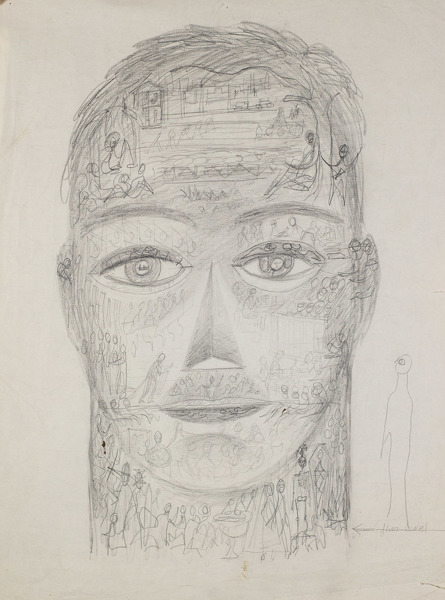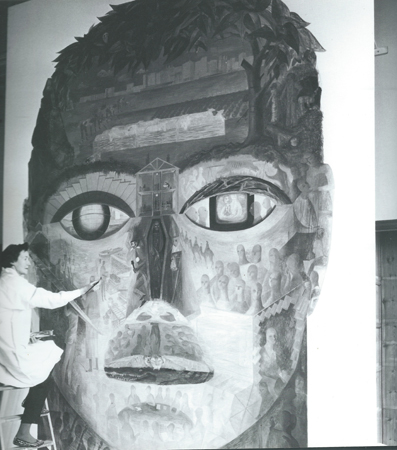

 Hover over the painting to magnify (there may be an initial delay while the magnified image is loaded)
Hover over the painting to magnify (there may be an initial delay while the magnified image is loaded)Free shipping
Barbara Jones (1912-1978):
Study for Man at Work - a century of technical and social progress, 1961
Framed (ref: 6660)
Inscribed
Pencil
See all works by Barbara Jones drawing pencil murals TOP 100
Provenance: with the artist until 1978; thereafter in her studio with her assistant Tony Raymond.
Exhibited: International Labour Exhibition, Central Office of Information, Turin, Italy, 1961
Literature: Ruth Artmonsky, Barbara Jones, Artmonsky Arts, 2008, pp.89-95; British Murals and Decorative Painting 1920-1960, Sansom & Co, 2013, pp.334-335

‘The two most impressive murals Barbara Jones produced were of gigantic heads, the first commissioned by the Central Office of Information for an International Labour Office exhibition in Turin celebrating the centenary of the Italian State (1961), the other for Philips Research Laboratory in Eindhoven (1966). These were not only striking because of their size but because of the way Jones chose to interpret her briefs. The Philips’ mural, entitled Man and his Senses, is a relatively straightforward strong image, with enlargened fingertips, mouth, nose, eyes and ears filled with patterned neurons and synapses, only weakened by the somewhat sentimental placing of a rose outside the head.
The Turin head is altogether more problematic carrying numerous ghostly figures not easily discerned at a distance. The theme was ‘Man at Work – a century of technical and social progress’ with which Barbara seems to have been at her most capricious. A very close inspection shows that at least some of the figures have at least a tenuous connection to the title – a board meeting, some agricultural scenes, coal miners with lamps and canaries, and, in the right ear of the head, a dentist with his patient! However, these few scenes are completely overwhelmed by a plethora of Jones’s preferred subjects – a coffin, two couples embracing, a skeleton, a tiger atop a crocodile, and, her very favourite – an owl.
It is not surprising then that Barbara declared the Turin head the work of which she was most proud, and she went to considerable lengths and expense to buy it back and to return it to her studio, where it remains, her only extant mural of any note. The work epitomizes her approach to mural commissions, which can only be described as that of a maverick. She was sufficiently competent, charming and astute to attract commissions, and to know when, and how far, to compromise with briefs, but would seize any possibility to slip in her own quirky obsessions.’
(Ruth Artmonsky, British Murals & Decorative Painting
1920-1960, Sansom & Co, 2013, p. 332)
 Unsung Heroines
Unsung Heroines




